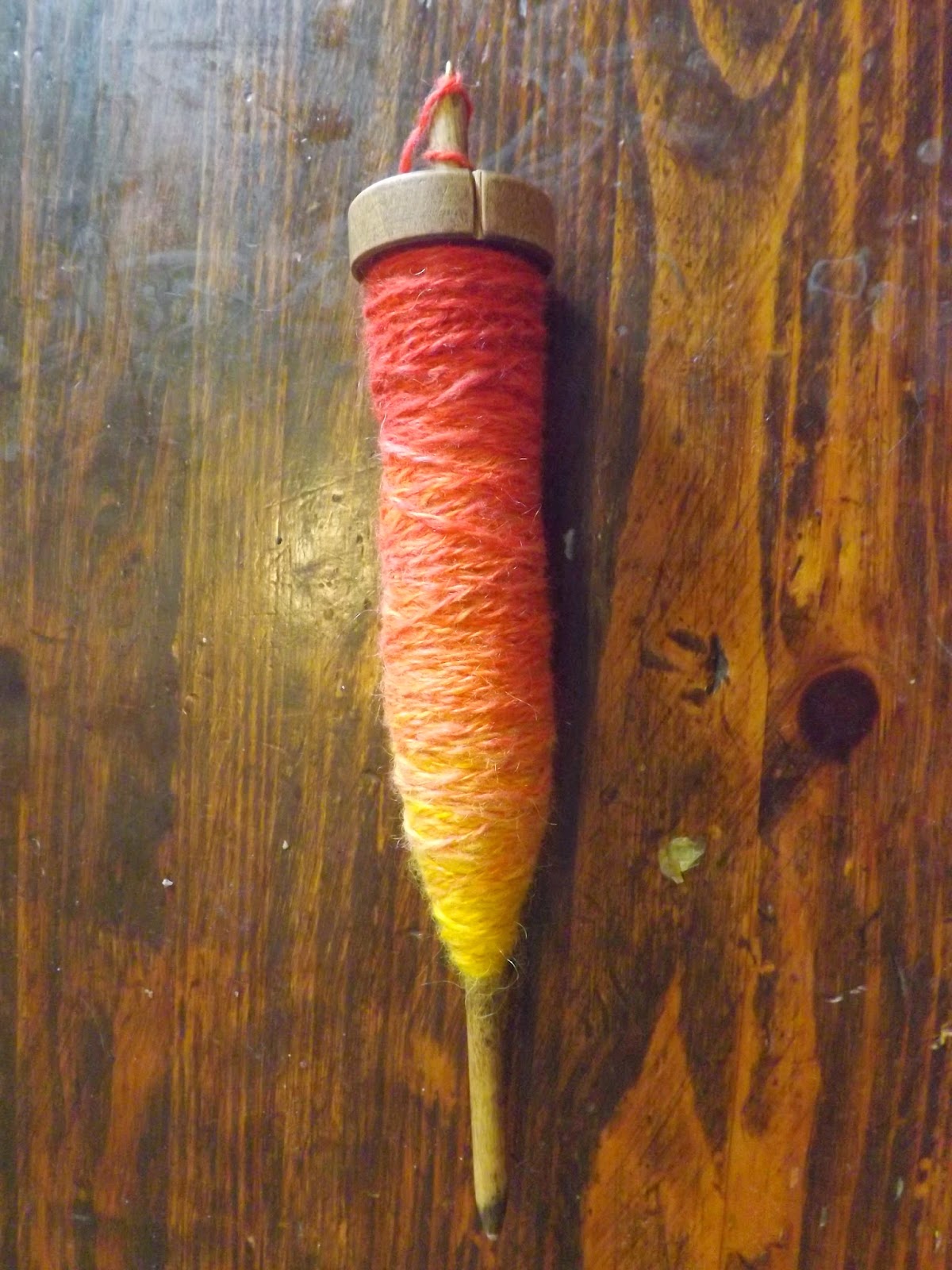Before I could even start, I had to figure out how much roving to dye. It was a pretty narrow strip of roving. How much roving would spin into how much yarn? So I did a test spin -- tore off twelve inches of roving and spun it the weight I wanted. I got seven yards, so to get about 150 yards of 2-ply, I dyed about 45 feet of roving.
Then I dyed a small section red, a small section yellow, and the rest I handpainted in shades of orange -- coral at one end shading to peach and apricot at the other. As always happens when I dye with food coloring, the red was a bit pink, but that didn't matter to me.
I divided the roving into two batches, one for each ply, and arranged it so it went red, orange, yellow, orange, red ... and I spun it up! It went really fast, and I was done and plied in three days. I liked the way the plies softened the color changes, which were a bit abrupt in the single yarn.
Are those the most gorgeous colors ever, or what?
Then I dressed my loom. The Ashford SampleIt loom is only eight inches wide, and I didn't want an eight-inch-wide blanket, so I made it two and a half yards long so I could divide it into three panels and sew them together. My table worked well to measure out the warp -- at least, when I pulled one of the leaves out.
Since I was sewing together the panels horizontally, I kept all the pattern in the warp and used plain light brown llama for the weft. I figured a brown weft would mute the colors just a bit, which is what happened.
Weaving always shocks me with how fast it goes. I can see why historically it's always been more popular than knitting -- it requires less yardage and is done in a fraction the time. So the blanket was all woven in a day and a half.
I cut it off the loom and measured it carefully into thirds. Then I zigzagged, in red thread, on each side of the boundary where I was going to cut. I hadn't left any extra space, so I couldn't have any raveling or fraying.
Then I quickly (for fear something would fray while I was working!) sewed the three panels together with leftover red yarn and added a single-crochet edging in the brown weft yarn. That would help stop any raveling as well -- though the real security would be in the felting.
I felted the blanket by running it through a hot wash cycle in my washer. However, I made a big mistake -- I let the cold rinse start without taking the blanket out. When the cold water hit, the blanket distorted. Sadly, it'll never be a real rectangle again. Of all the stages to mess up, the felting is the worst! It's too late to undo anything.
But, distorted or not, it's still gorgeous, colorful, and water-resistant. It'll do. And this baby I'm having in August will be my first child I have actually made anything for. Knitted blankets take forever, and sweaters or buntings always seem too hard. Weaving is quick and pretty simple, so I was able to finish this project in a week instead of letting it languish on knitting needles for months until I go into labor, like I did with projects for both my first two kids.






Love the colors! And I'm sure the new baby won't care a lick that it isn't perfectly shaped!
ReplyDelete